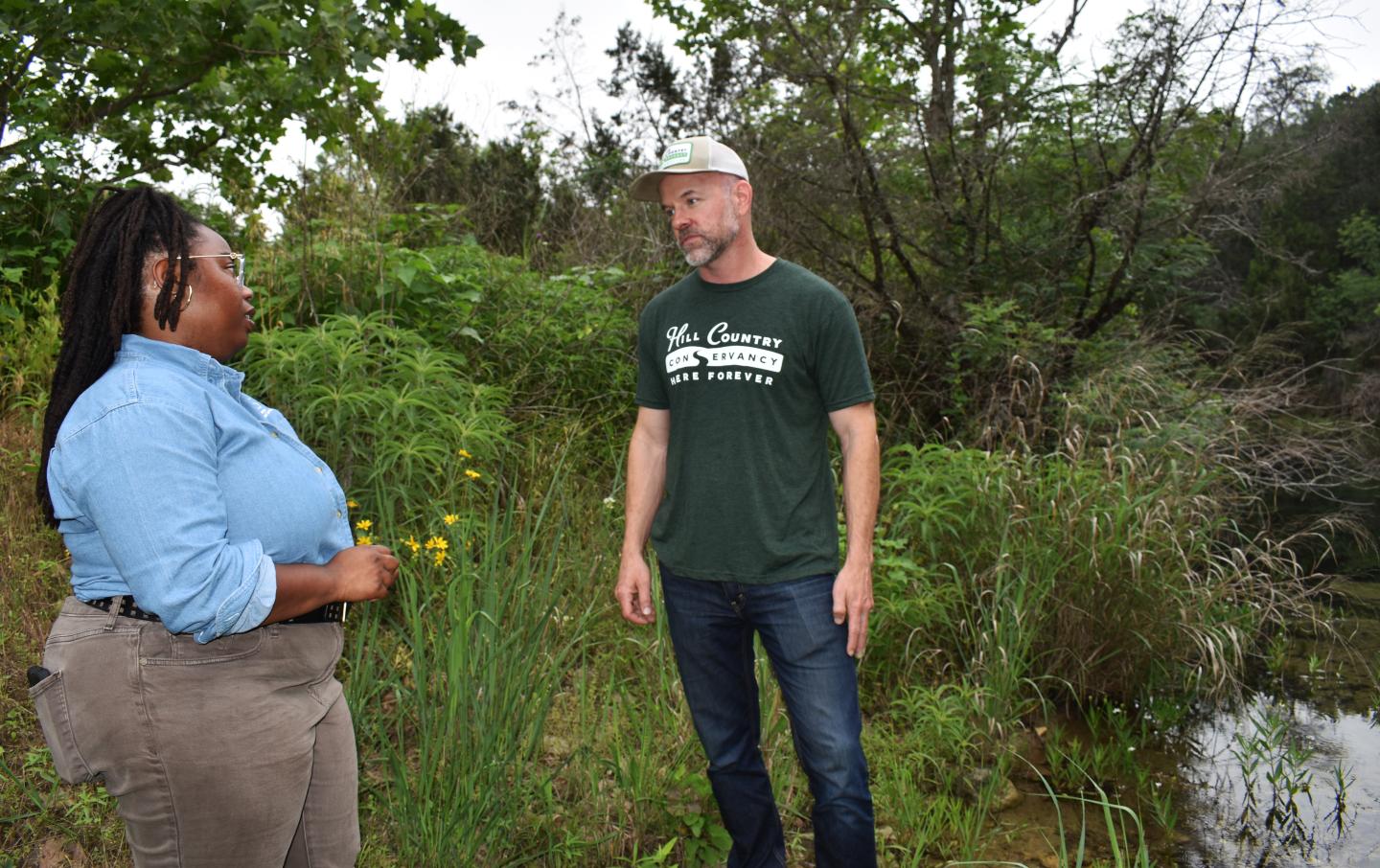NRCS Regional Conservation Partnership Program helps restore, protect Texas’ natural resources on private agricultural lands
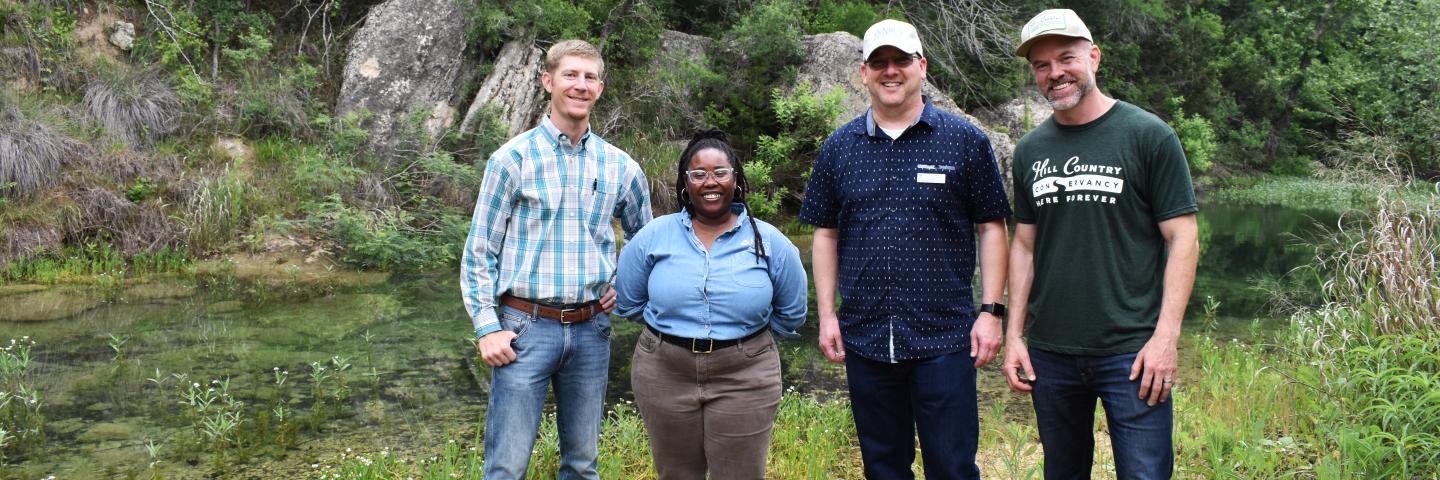
NRCS in Texas has expanded its conservation efforts through RCPP to provide funding to non-profit and other entities to assist landowners with conservation planning and implementation to enhance water resources, soil health, wildlife habitat and long-term productivity on private lands.
Story and photos by Angela Sims, Public Affairs Specialist, Temple, Texas
Driving down the two-mile-long gravel road of Shield Ranch Barton Creek outside of Austin, Texas, no one would suspect to find some of Texas’ best protection against the elements of Mother Nature. Conservation and land stewardship are critical in protecting the agricultural lands of Shield Ranch against the challenging Central Texas weather that ranges from drought to floods.
To accomplish the vital role of preserving agricultural lands such as those on Shield Ranch, landowners and operators build and maintain positive relationships with other entities while focusing on enhancing and protecting natural resources through cooperative efforts.
Partnerships
The U.S. Department of Agriculture Natural Resources Conservation Service (USDA NRCS) in Texas has expanded its conservation efforts through the Regional Conservation Partnership Program (RCPP) to provide funding to non-profit and other entities to assist landowners with conservation planning and implementation to enhance water resources, soil health, wildlife habitat and long-term productivity on private lands.
“NRCS and partners co-invest in conservation activities to address resource concerns at a regional scale,” said NRCS Texas State RCPP Coordinator John Adams.

RCPP in Action
Through the Farm Bill 2014 RCPP NRCS partnered with the Hill Country Conservancy in Austin, Texas.
This initiative was geared to landowners with projects addressing short-term and long-term conservation management in the Barton Creek, Blanco River, Llano River, Onion Creek, Pedernales River, Sandy Creek and Upper San Marcos River Watersheds.
“Hill Country Conservancy was one of the few entities that was selected to participate in the first round of RCPP funding under Farm Bill 2014 to enhance the capabilities of NRCS with a reach that is not feasible with NRCS staff alone,” Adams said.
In 2018, the Hill Country Conservancy and 18 partner organizations, including the Texas Hill Country Conservation Network, banded together to create the Hill Country Headwaters Conservation Initiative (HCHCI). The HCHCI focuses on enhancing and protecting natural resources through partnerships with conservation-minded landowners.
And through RCPP in Texas, HCHCI was awarded $5.15 million in 2018 and more than $23 million in 2023 for land stewardship projects and conservation easements.
After receiving RCPP awards in 2018 and 2023, HCHCI handled outreach and application processes for selection of land stewardship projects.
“We partnered with approximately 30 producers to provide conservation technical and financial support for land management projects aimed at enhancing water quality, soil cover and native biological diversity on approximately 24,000 acres,” said Chief Conservation Officer for Hill Country Conservancy Frank Davis.
Shield Ranch Barton Creek, a 6,400-acre nationally designated historic district and protected wildland in Central Texas, was one of the projects selected for the HCHCI under RCPP in 2018 through 2023.
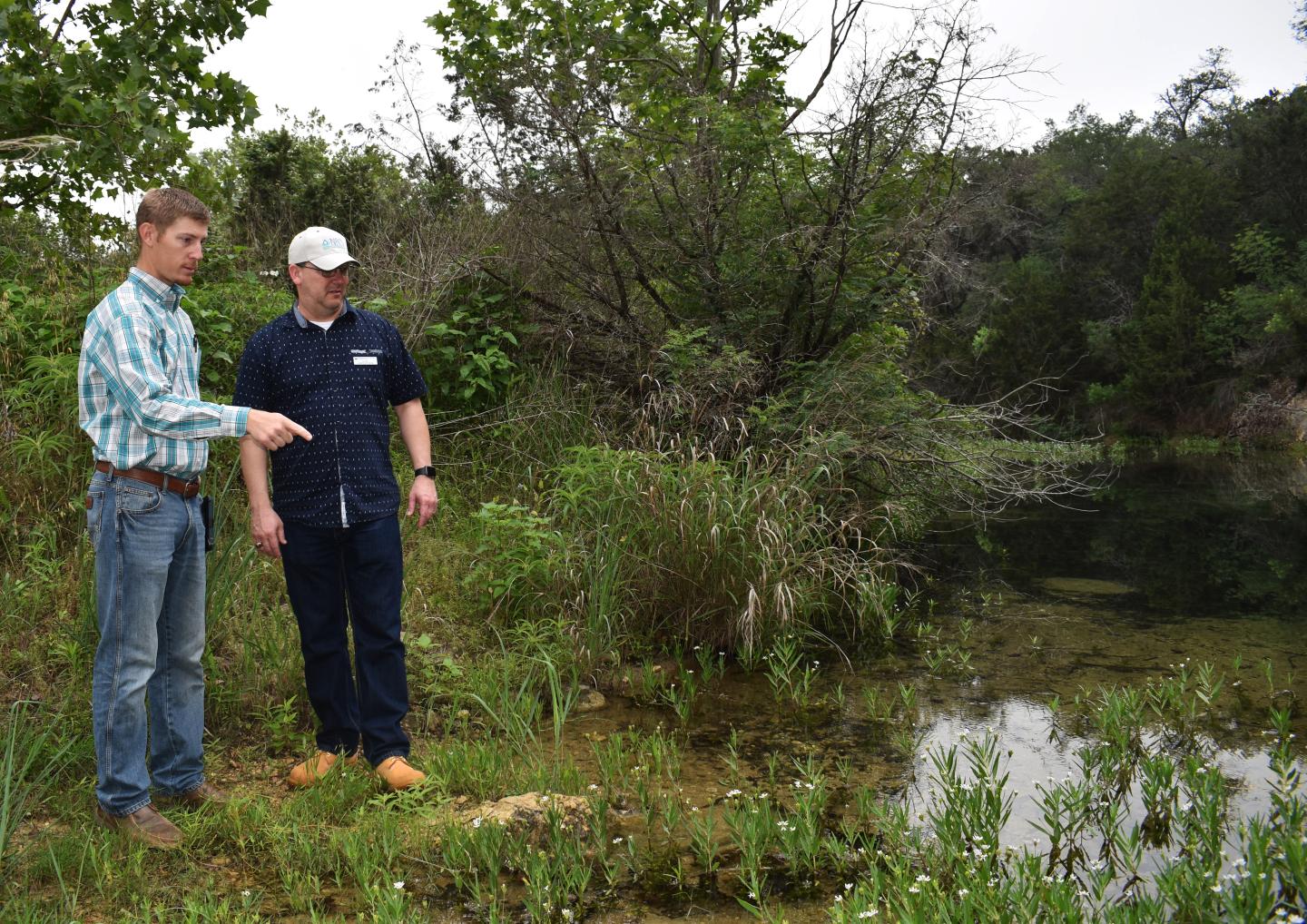
Davis said HCHCI selected the Shield Ranch project, which comprises 10% of the Barton Creek watershed, because it had the highest impact to effectively promote native vegetative cover and soil and watershed health.
Shield Ranch
The ranch, originally established and owned by Fred and Vera Shield in 1938, has improved during the past 86 years.
Generation after generation, the family has worked diligently to preserve the scenic landscape and maintain sensitive areas in the Barton Creek watershed and Edwards Aquifer contributing zone.
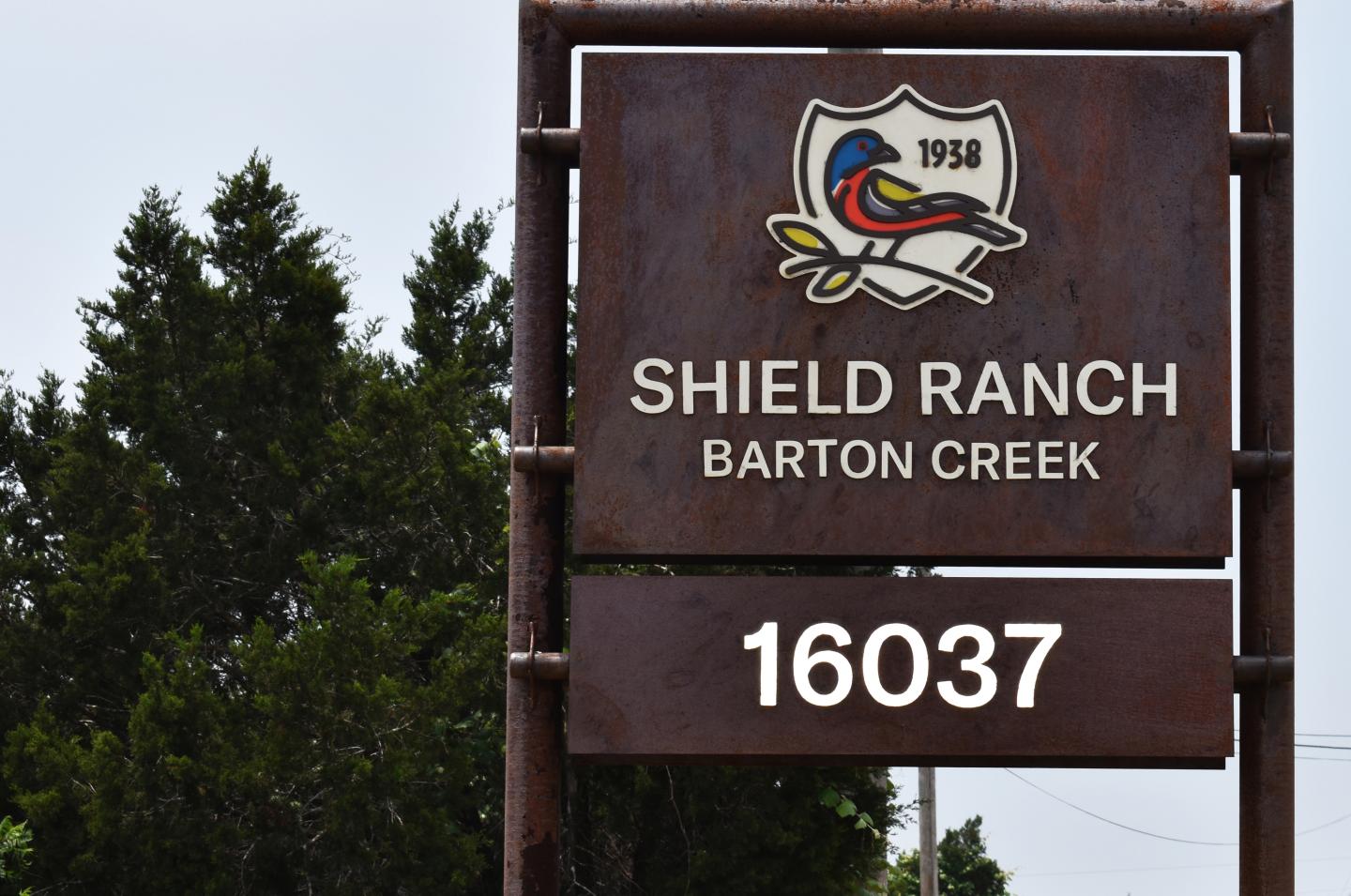
“It began with Fred's actions of habitat and range improvements and working with the Soil Conservation Service (now NRCS),” said Shield Ranch Land Steward and Operations Manager Grant Lawrence. “In his time, he was progressive, active in restoring the land, and a conservationist.”
When the Shields first purchased the land, it was primarily cedar brakes. White-tailed deer and other wildlife were scarce.
Throughout years of conservation stewardship, the land has been restored to a mosaic of habitats, benefiting native species.
Some of the historical conservation practices included rest and rotational grazing and extended periods of rest without grazing pressure.
In addition, an integrated Ashe juniper brush management control plan was implemented, which allowed for improved water quality and quantity. The brush management plan included selective mechanical treatment and prescribed burns that mimicked the natural, low intensity burns that historically reduced excess fuel loads.
“These practices in concert have resulted in increased ecological diversity on the land,” Lawrence said.
The ongoing improvements on the land demonstrated Shield Ranch’s dedication to conservation, which helped to influence HCHCI’s decision for RCPP selection.
RCPP and an Enhanced Conservation Plan
“We have a tough job in Texas from an NRCS perspective – it's Texas, which means there is a significant amount of conservation that can and needs to be implemented,” Adams said. “Who better to assist NRCS with these conservation and restoration efforts than our local partners through an RCPP?”
After receiving the RCPP award, Shield Ranch worked with NRCS Travis County Resource Conservationist Chiana Palmer to develop a conservation plan for the ranch.
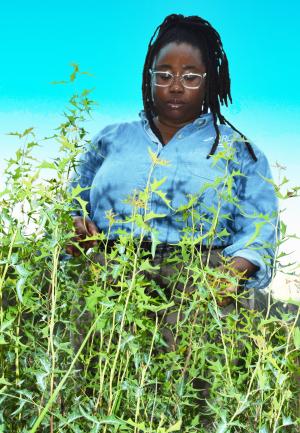
“When I met with Grant, I asked him what the goals for the ranch were,” Palmer said. “Based on the conservation goals of the operation and to address natural resource concerns, conservation practices are recommended.”
The plan included conservation practices such as enhancing riparian buffers, brush management, herbaceous weed treatment, prescribed grazing, grazing deferment, upland wildlife habitat management, fencing and improving pollinator and monarch habitat.
The Outcome
Through Shield Ranch’s partnership with HCHCI and NRCS, the conservation benefits are noticed.
“We’ve been encouraged by the vegetative response despite drought,” Lawrence said. “Coming out of two of the driest years on record for the past 21 years on the ranch, we’ve learned a lot about the ranch during the grazing deferment, allowing greater seed production and dispersal. We’ve
seen increased biodiversity in brush treatment areas as we implement a mosaic approach with multiple mechanical methods. NRCS has expanded our capacity to manage the land – financial resources and technical assistance – and accelerated our timeline for applying treatment as we’re able to treat more acres per season.”
Palmer agrees.
“It's mind blowing to see the progression from point A to point B to point C and how much it's changed,” said Palmer. “It's just simply amazing – seeing the wildflowers everywhere. At first, it was not like this. Now that the wildflowers and the native grasses have room to really bloom and grow. And to me, that's a life lesson.”
Conservation Easements
Shield Ranch's selection by the HCHCI committee was also influenced by the security provided through conservation easements with the Nature Conservancy and the city of Austin. These agreements not only safeguard the ecological integrity of the property but also reinforce the commitment to conservation practices that benefit both the environment and the community.
In addition to funding conservation practices, a portion of the HCHCI RCPP award was used for a conservation easement on 1,200 acres on the Llano River, and a conservation easement on a 731-acre property a few miles from Fredericksburg was obtained shortly after. Another conservation easement was recently completed on 50 acres of sensitive Edwards Aquifer recharge land, and several more conservation easements will be completed within the next year. The easements will help protect the land and natural resources from commercial development for years to come.
“The Natural Resources Conservation Service’s Regional Conservation Partnership Program has been a tremendous help to Hill Country Conservancy and its many partners in our collective efforts to enhance and preserve water, wildlife and other natural resources,” said Davis. “As Texans, we rely heavily on the voluntary efforts of private landowners who are using their time and resources to improve and preserve their land. RCPP provides the needed financial and technical assistance to make it happen. It is a privilege to participate in a private-public partnership that benefits all of us in the Texas Hill Country, now and into the future.”
